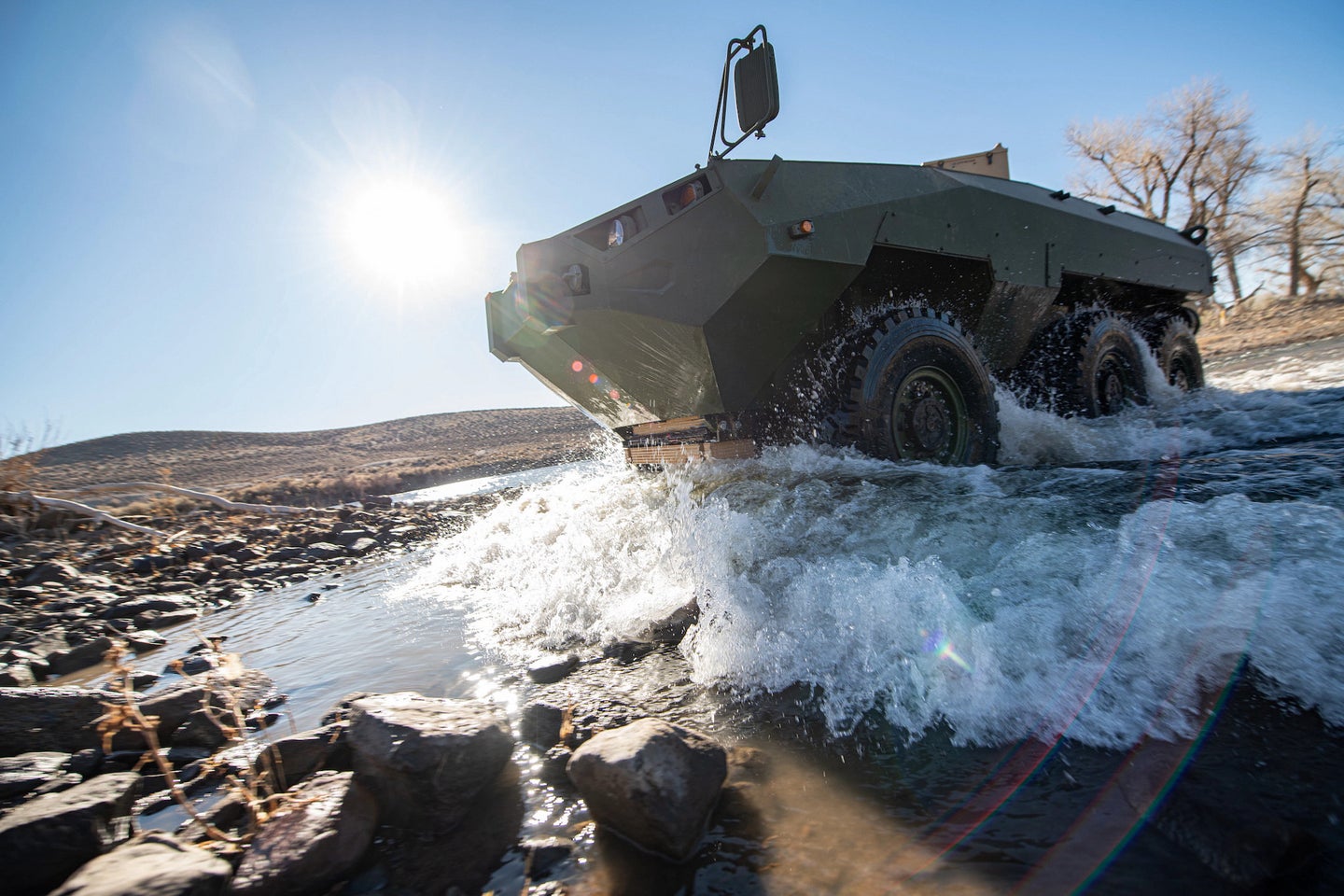The Cottonmouth amphibious vehicle could carry Marines into future battles
The Marine Corps needs a new Light Armored Vehicle, and this could be their venomous new ride.

When the Marine Corps goes to war, it needs to be prepared to fight as soon as it gets there. The Light Armored Vehicle has fulfilled this role for decades. Some of those vehicles, first introduced in the 1980s, are starting to near the end of their already-extended service life expectancy, and so the Marine Corps is looking for a new machine to replace everything the LAV once offered.
A Light Armored Vehicle is faster and more vulnerable than a tank, providing the advantage of time. By moving quickly from where it arrived, be it from landing craft on a beach or straight from transport planes on a rugged runway, Marines using LAVs can help the rest of the force choose where to fight, and how to win.
A battalion of LAVs, used together for reconnaissance, “helps to reduce the ‘fog of war’ by locating where the enemy is, where he is not, where he is strong, and where he is weak,” reads a Marine Corps manual from 2009.
To understand what the Marines want in a replacement, it helps to understand how the LAV itself evolved. Development started in 1981, and by 1982 the Pentagon awarded a contract for nearly a thousand of the vehicles. The machine entered service in 1983, and by 1985 the Corps started developing specialized versions. Over 30 variants exist, performing functions as varied as battlefield ambulance, mobile mortar platform, and tank hunter.
Diesel powered and with eight wheels, the original LAV can achieve a top speed around 62 mph on open ground. With propellers in the back, it can navigate calm waters (think lake, not ocean) at a speed of about 6.5 mph. The original version mounted a 25 mm cannon, enough to defend against other light vehicles and infantry, and had room inside for five marines to get out and fight on foot.
[Related: This self-driving robot tank can parachute out of a plane]
In August 2020, the Corps posted a solicitation seeking prototypes to replace the LAV. This new vehicle would be the Advanced Reconnaissance Vehicle. It is designed to be a coordinating node of battle—not just an armored vessel for people but a way to manage sharing information in the hectic heat of a firefight.

As outlined, it will be built on “open system architecture,” meaning that multiple contractors in the future can design and incorporate modifications. Given how much modification went into subsequent generations of the LAV, designing the machine’s electronics and ports to be adaptable for the future is a bet on long-term resiliency.
Beyond the computing and communications power, the Marines are looking for a machine that can fight, scout, and fit inside all the same transports as the LAV.
The Cottonmouth, built by long-standing defense contractor Textron, is one prototype proposed to replace the LAV. Launched with a video heavy on nature photography, the Cottonmouth is billed as a modern scout, rich in tools to watch the battlefield and weapons to make it useful once it finds targets.
Textron describes Cottonmouth as the “naval sensor node for the United States Marine Corps.” It is a scout with a more comprehensive understanding of what being a scout in the 21st century means.
[Related: This remote-controlled landmine will attack tanks from above]
To feed the data-heavy demands of advanced targeting, an armored vehicle must record useful information about its surroundings, and then relay that information to other units. As imagined, sensors from a scout like the Cottonmouth could feed target coordinates to distant artillery or nearby aircraft, a concerted effort to get the best immediately available tool for the task at hand.
USNI News reports that Textron started developing the Cottonmouth more than a year ago, in anticipation of the requests. This development included a range of features that will distinguish the machine as a truly modern tool of war, like the ability to incorporate tethered drones. Other features, like the ability to travel in the ocean and roll onto shore, will make up for longstanding limitations of the LAV. They will also, almost certainly, allow the Marine Corps to transition its vehicles from the long inland patrols of the 2000s and 2010s, into the possible island- and coastal campaigns of the 2030s.
Once the Marine Corps finds its dedicated vehicle for battle management, it will likely want to fill out the rest of the roles of light armored reconnaissance. The LAV proved an exceptionally versatile starting point for an array of needs. Getting the frame of the machine right first, complete with sensors and power supply, should allow the full development of an extensive family of new vehicles.
